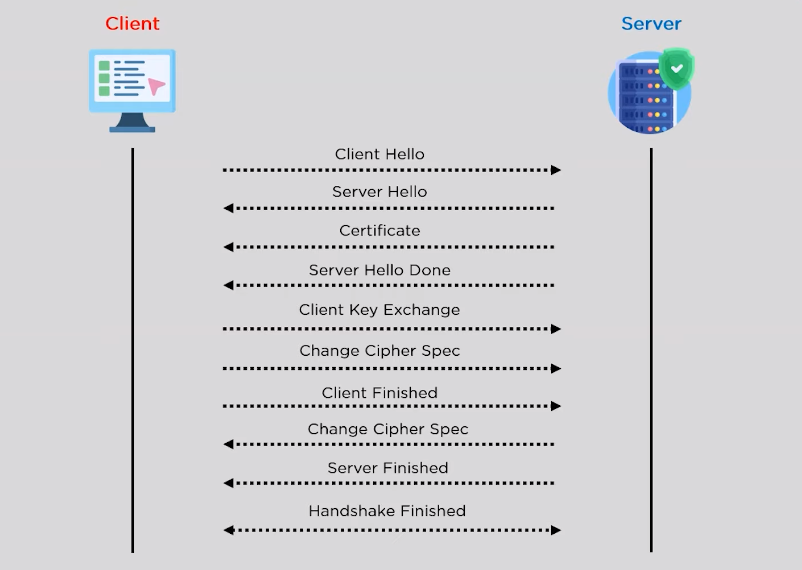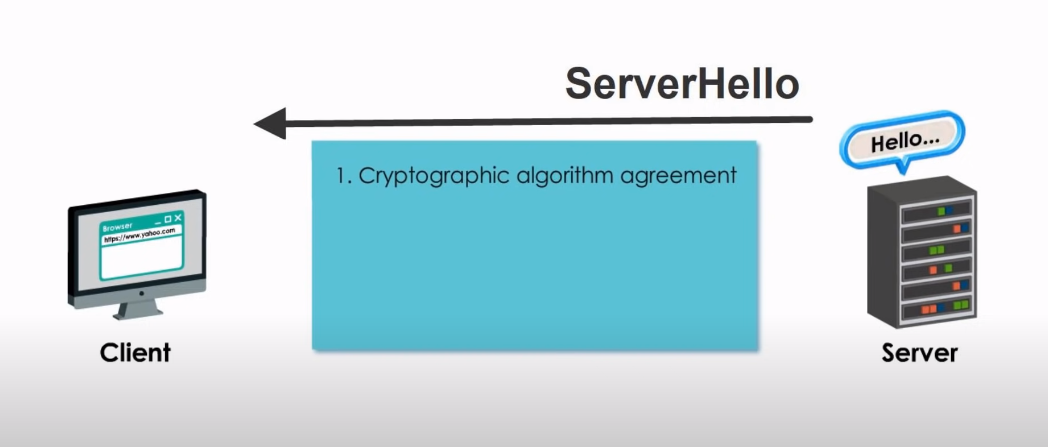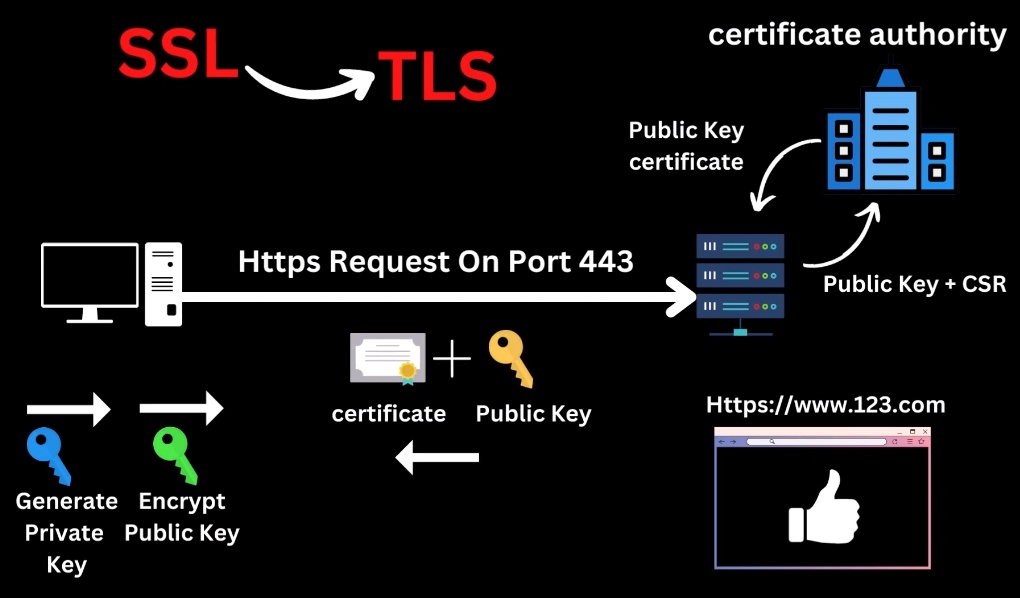Importance of SSL In Securing Online Communications
SSL (Secure Sockets Layer) is a protocol that provides a secure and encrypted connection between a web server and a web browser. It is used to protect sensitive information such as passwords, credit card numbers, and other personal data that is transmitted over the internet.
Definition of SSL
SSL (Secure Sockets Layer) is a security protocol that is used to establish an encrypted link between a web server and a web browser. This protocol ensures that all data transmitted between the server and the browser remains private and secure. SSL is commonly used to protect sensitive information such as passwords, credit card numbers, and other personal data that is transmitted over the internet. It is widely used by websites that require users to enter personal information, such as online banking and e-commerce sites.
SSL Certificate Types

There are three main types of SSL certificates:
- Domain Validated (DV) SSL Certificates: These certificates only verify that the domain name is registered and that the certificate requester has control over the domain. They are the most basic type of SSL certificate and are typically used for personal websites or blogs.
- Organization Validated (OV) SSL Certificates: These certificates require additional verification of the organization’s identity, including its legal existence and physical location. They are commonly used by businesses and organizations that require a higher level of trust and security.
- Extended Validation (EV) SSL Certificates: These certificates provide the highest level of validation and are the most trusted type of SSL certificate. They require a rigorous verification process that includes confirming the legal identity and physical location of the organization. EV SSL certificates are used by large corporations, financial institutions, and other organizations that require the highest level of security and trust.
SSL’s Role In Establishing Secure Connections
SSL (Secure Sockets Layer) plays a crucial role in establishing secure connections between a website and its users. When a website has an SSL certificate installed, it encrypts all the data that is transmitted between the website and the user’s browser. This ensures that any sensitive information, such as login credentials, credit card numbers, and personal information, is protected from prying eyes.SSL certificates also provide authentication, ensuring that users are communicating with the website they intended to and not an impostor.
SSL Handshake Process

The SSL handshake process is the initial communication between a website and its user’s browser to establish a secure connection. It involves the following steps:
- The user’s browser sends a request to the website to initiate a secure connection.
- The website responds by sending its SSL certificate to the browser.
- The browser verifies the certificate’s authenticity and checks if it trusts the certificate issuer.
- If the certificate is valid and trusted, the browser sends a message to the website to confirm.
How Does SSL Encryption Work?
SSL encryption works by encrypting the data that is transmitted between the website and the user’s browser. This ensures that any sensitive information, such as passwords or credit card numbers, cannot be intercepted by hackers or third parties. Once the SSL connection is established, all data is encrypted using a unique key that is generated for each session. This key is used to encrypt and decrypt data as it is transmitted between the website and the user’s browser.
SSL Encryption Process
The SSL encryption process involves several steps. Firstly, the user’s browser requests a secure connection to the website. The website responds by sending its SSL certificate to the browser. The browser then checks the certificate to ensure that it is valid and issued by a trusted authority. If the certificate is valid, the browser and website establish a secure connection and negotiate a unique session key. This key is used to encrypt and decrypt data as it is transmitted between the website and the user’s browser.
SSL Decryption Process

The SSL decryption process is the opposite of the SSL encryption process. When data is transmitted from the website to the user’s browser, it is encrypted using the session key that was established during the SSL handshake. The user’s browser then decrypts the data using the same session key. However, in some cases, SSL decryption may be necessary for security purposes. For example, if an organization needs to monitor its employees’ internet usage to prevent data breaches or other security threats, it may use SSL decryption
Advantages of SSL Encryption
SSL encryption has several advantages:
- Secure Data Transmission: SSL encryption ensures that any data transmitted between the website and the user’s browser is secure and cannot be intercepted or tampered with by hackers.
- Authentication: SSL certificates verify the identity of the website, ensuring that users are communicating with the intended website and not an imposter.
- Improved Search Engine Rankings: Search engines like Google prioritize websites that use SSL encryption, which can improve a website’s search engine rankings.
Prevention of Data Breaches
SSL encryption is an important measure to prevent data breaches. By encrypting data transmitted between the website and the user’s browser, SSL encryption ensures that sensitive information, such as login credentials or credit card information, cannot be intercepted and stolen by hackers. This helps to protect both the website and its users from potential data breaches and identity theft.
SSL’s Limitations In Protecting Data At Rest
While SSL encryption is effective in protecting data in transit, it has limitations in protecting data at rest. This means that if a hacker gains access to a website’s database or server where sensitive information is stored, SSL encryption alone cannot prevent the data from being stolen. In addition to SSL encryption, website owners need to implement strong security measures such as access controls, firewalls, and regular security audits to protect data at rest.
Encryption Vulnerabilities and SSL
Encryption vulnerabilities and SSL (Secure Sockets Layer) encryption are two different things. SSL encryption is a protocol used to secure data in transit between a website and a user’s browser. It works by encrypting the data so that it cannot be intercepted by hackers. However, SSL encryption has its vulnerabilities. One of the most significant vulnerabilities is the man-in-the-middle attack.
Ssl Alternatives And Complements For Data Encryption
There are several alternatives and complements to SSL encryption for data encryption at rest. One of the most popular is AES (Advanced Encryption Standard) encryption. AES is a symmetric encryption algorithm that uses a key to encrypt and decrypt data. It is widely used in applications such as file encryption, disk encryption, and database encryption.
VPNs and SSL
Virtual Private Networks (VPNs) are another popular alternative to SSL encryption. VPNs create a secure tunnel between two devices, allowing data to be transmitted securely. VPNs are commonly used for remote access to corporate networks, as well as for personal privacy and security. In addition to VPNs and AES encryption, there are also other complementary encryption technologies such as IPsec (Internet Protocol Security) and TLS (Transport Layer Security).
HTTPS and SSL

HTTPS (Hypertext Transfer Protocol Secure) is a protocol used to secure communication over the Internet. It uses SSL (Secure Sockets Layer) or TLS (Transport Layer Security) encryption to protect data during transmission. HTTPS is commonly used for secure online transactions, such as online banking and shopping.SSL is a cryptographic protocol used to secure communication over the internet. It encrypts data transmitted between two devices, ensuring that it cannot be intercepted or read by unauthorized parties.
SSH and SSL
SSH (Secure Shell) is a protocol used for secure remote access to a computer or server. It encrypts all data transmitted between the client and server, preventing unauthorized access or interception of sensitive information.SSL and SSH are both used for secure communication over the Internet, but they serve different purposes. SSL is primarily used for securing web-based transactions, while SSH is used for securing remote access to a computer or server.
PGP and SSL
PGP (Pretty Good Privacy) is a protocol used for secure email communication. It uses encryption to protect the content of emails from unauthorized access or interception. SSL, on the other hand, is primarily used for securing web-based transactions, such as online shopping or banking. While both PGP and SSL use encryption to protect data, they are designed for different types of communication and have different levels of security.
SSL Certificates and Validation
SSL certificates are digital certificates that are used to establish a secure connection between a web server and a user’s web browser. They help to ensure that any data exchanged between the two is encrypted and cannot be intercepted by third parties. SSL certificates are issued by trusted third-party organizations, known as Certificate Authorities (CAs), who verify the identity of the website owner and the authenticity of the website. This process is called validation and involves verifying the domain name, the organization’s identity, and other relevant information.
Certificate Authorities
Certificate Authorities (CAs) are trusted third-party organizations that issue SSL certificates to website owners. They play a crucial role in ensuring the authenticity and security of websites by verifying the identity of the website owner and the domain name. CAs use a rigorous validation process to ensure that the SSL certificate is issued only to the legitimate website owner. Once the SSL certificate is issued, the CA provides a digital signature that is used to encrypt the data exchanged between the web server and the user’s web browser.
Certificate Validation Process
The SSL certificate validation process typically involves several steps. First, the website owner must request an SSL certificate from a trusted CA. The CA will then verify the identity of the website owner and the domain name associated with the SSL certificate. This may involve verifying information such as the website owner’s name, address, and phone number, as well as verifying that the website domain is registered to the website owner.
Certificate Revocation And Renewal
After the SSL certificate is issued, it is important to regularly monitor its validity and ensure that it has not been revoked. If the certificate is compromised or no longer needed, the website owner can request its revocation from the CA. SSL certificates also have a limited lifespan, typically ranging from one to three years. Before the certificate expires, the website owner must renew it with the CA to ensure continued secure communication between the website and its users.
How to Check if a Website is SSL Secured?
To check if a website is SSL secured, you can look for a few visual indicators in your web browser. First, look for a padlock icon in the address bar. This indicates that the website is using HTTPS and has a valid SSL certificate. You may also see the letters “https” at the beginning of the website’s URL, instead of just “http”.
Importance of SSL in E-Commerce
SSL is extremely important in e-commerce because it ensures that sensitive information, such as credit card numbers and personal data, is transmitted securely between the website and the user. Without SSL, this information could be intercepted and stolen by hackers, putting both the user and the website at risk.
SSL Performance and Speed Considerations
When it comes to SSL performance and speed, there are a few factors to consider. First, the encryption and decryption process that SSL uses can add a small amount of overhead to website loading times. However, this is usually negligible and not noticeable to users. Another factor to consider is the type of SSL certificate being used. Higher-level certificates, such as Extended Validation (EV) SSL, can require more processing power and may slightly impact website speed.
Conclusion
In conclusion, SSL is a crucial technology that helps to secure online transactions and protect sensitive information. Its use is widespread across various industries, including e-commerce, banking, and healthcare. By implementing SSL, organizations can build trust with their customers and ensure that their data is kept safe from prying eyes.
FAQs
What is SSL encryption?
SSL encryption is a security protocol used to protect sensitive information, such as credit card numbers and login credentials, transmitted over the internet. It works by encrypting the data so that it cannot be intercepted and read by unauthorized parties. SSL is commonly used on websites to provide a secure connection between the user’s browser and the website’s server.
How does SSL encryption work?
SSL encryption works by using a combination of public and private key encryption. When a user connects to a website with SSL, the website’s server sends its public key to the user’s browser. The browser then uses this key to encrypt any data it sends to the server. The server then uses its private key to decrypt the data and process the request. Any data sent back to the user is also encrypted using the public key, ensuring that it cannot be intercepted and read by unauthorized parties.
Does SSL encryption protect data at rest?
SSL encryption only protects data while it is being transmitted between the user’s browser and the website’s server. It does not protect data at rest, which refers to data that is stored on the website’s server or database. To protect data at rest, additional security measures such as encryption of stored data and access controls should be implemented.
How can I check if a website is SSL secured?
You can check if a website is SSL secured by looking for the padlock icon in the browser’s address bar. If the website is secured with SSL, the padlock icon will be displayed, and the URL will start with “https” instead of “HTTP”. You can also click on the padlock icon to view the website’s SSL certificate information. Additionally, some browsers display a warning message if a website is not secured with SSL.
What are SSL alternatives and complements?
Some SSL alternatives and complements include:
- Transport Layer Security (TLS): TLS is the successor to SSL and provides similar security features.
- HTTPS: HTTPS is a protocol that uses SSL/TLS to encrypt data transmitted between a website and a user’s browser.
- Extended Validation Certificate (EV SSL): EV SSL provides additional security measures by verifying the identity of the website owner.
What are SSL performance considerations?
Some SSL performance considerations include:
- Processing overhead: SSL/TLS encryption and decryption require additional processing power, which can impact server performance and increase response times.
- Certificate validation: The SSL/TLS handshake process includes certificate validation, which can add additional latency to the connection.
- Cipher suite selection: Choosing the appropriate cypher suite can impact SSL/TLS performance. Some cypher suites may be faster but less secure, while others may be slower but more secure.
What are SSL best practices?
Here are some SSL best practices:
- Use a trusted SSL/TLS certificate from a reputable Certificate Authority (CA).
- Enable HTTP Strict Transport Security (HSTS) to force all traffic to use HTTPS.
- Use the latest version of the SSL/TLS protocol that is supported by your server and clients.
- Disable weak cypher suites and protocols that are no longer considered secure.
- Implement perfect forward secrecy (PFS) to protect against future attacks on the private key.
What are the future trends in SSL?
SSL is constantly evolving to keep up with the changing security landscape. Some future trends in SSL include:
- Increased use of Extended Validation (EV) certificates to provide additional assurance of a website’s authenticity.
- Adoption of TLS 1.3, which provides faster and more secure connections.
- Implementation of Certificate Transparency (CT), which helps detect and prevent fraudulent SSL certificates.
- Use of post-quantum cryptography to protect against attacks from quantum computers.
In which industries are SSL widely used?
SSL is widely used in various industries, including but not limited to:
- E-commerce: SSL is essential for securing online transactions and protecting sensitive customer information such as credit card details.
- Banking and finance: SSL is crucial for securing online banking and financial transactions.
- Healthcare: SSL is used to secure electronic medical records and protect patient privacy.
- Government: SSL is used to secure government websites and protect sensitive information.
What are some SSL case studies and examples?
Here are some SSL case studies and examples:
- Amazon.com: Amazon.com uses SSL to secure all of its online transactions, protecting the sensitive information of millions of customers around the world.
- Bank of America: Bank of America uses SSL to secure its online banking services, ensuring that customers can safely access their accounts and conduct transactions from anywhere in the world.
- Mayo Clinic: The Mayo Clinic uses SSL to secure its electronic medical records system, protecting patient privacy and ensuring sensitive medical information.
